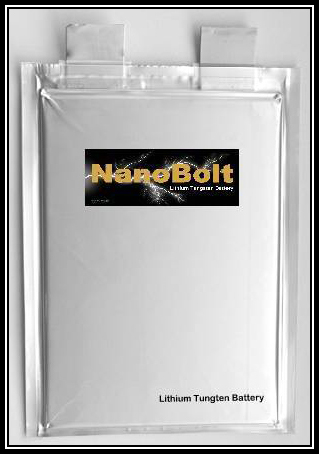NanoBolt Battery Company Stands at the Forefront of a New Era in High-Capacity Battery Production.
NanoBolt battery company introduced the world’s first lithium tungsten nanobattery in 2019 and has made many new breakthrough improvements to its advanced battery designs. NanoBolt batteries utilize a nano tungsten anode made from tungsten nanospheres and tungsten nanotubes. This application allows for faster charges and longer periods between charging. With this market disrupting technology the company is poised to deliver new lithium tungsten batteries for electric vehicles, cell phones, tablets, laptop computers, home and business battery backup, along with much larger renewable energy storage systems.
The global lithium-ion battery market size is valued at US$ 59.8 Billion in 2022 and is projected to reach a staggering USD 307.8 billion by 2032. With NanoBolt’s lithium tungsten nanobattery being far superior to lithium-ion batteries, NanoBolt is positioned to seize the market. “NanoBolt, powering the future!”
NanoBolt Lithium Tungsten Battery
Charge Faster, Last Longer, Drive Farther The Revolutionary NanoBolt Lithium Tungsten Battery puts the miracle of Nano Technology to work.

Our Revolutionary NanoBolt Lithium
Tungsten Battery technology improves upon existing Lithium Battery technology by adding Tungsten and Carbon Multi-Layered Nanotubes to the Anode materials. This addition of Nanotubes provides a massive new surface for ions to cling to during the recharge and discharge cycles. The recharge rates are dramatically improved and overall energy storage is increased.
Tungsten Battery technology improves upon existing Lithium Battery technology by adding Tungsten and Carbon Multi-Layered Nanotubes to the Anode materials. This addition of Nanotubes provides a massive new surface for ions to cling to during the recharge and discharge cycles. The recharge rates are dramatically improved and overall energy storage is increased.

The Tungsten NanoTubes are Blended with an Adhesive Agent and Applied to Copper Foil to Form the New Tungsten Carbon NanoTube Anode. The Battery is Then Assembled Using Current Lithium-Ion Battery Processes.
Below is a cross section of the Tungsten Lithium assembly system.

NanoBolt Battery Uses Advanced
nanotechnology to dramatically increase the storage area for ions. The Nano-scale Anode materials provide a web like nano structure for ions to cling. This greatly improves the speed of charging and the overall energy capacity.
The Tungsten and Carbon Nanotubes are bonded to the copper Anode sub-straight using our unique manufacturing process.
The finished Anode containing the Nanotubes is ready to be cut to size for use in any Lithium Battery design.

The Global Electric Vehicle Battery
market exceeded $56.4 billion in 2022 and is projected to eclipse $134.6 billion before the end of 2027. Demand for EV batteries is being driven by many factors including but not limited to, rising demand for electric vehicles, battery technology advancements, favorable government regulations and green policies, and the advent of plug-in EVs.
Around the world governments are heavily promoting the use of electric vehicles over fears of of the environmental impact of burning fossil fuels. Governments around the world are providing financial incentives for the use of electric vehicles including tax exemptions, refunds, subsidies, lowered parking and toll rates, and even free EV charging stations. As a direct result of all of these policies the demand for EV batteries is outpacing supply.
The Combined Global Smartphone,
tablet, and laptop market is estimated to grow from $724.9 billion in 2022 to over $1,189.6 trillion in 2029. in addition, as of 2022, 75% of the world’s population over 10 years old owns a smartphone. That number is expected to increase to 90% by 2025.
Factors such as more millennials entering the work force, the development of telecommunication infrastructures, and the emergence of budget friendly smartphones are all contributing to the boom in smartphone sales. Emerging global markets are also contributing to this growth trend. Consequently, it is expected that demand for batteries for these devices will continue to grow at an unprecedented pace.

Contact Us
Send Us A Message
Copyright 2023 © All Right Reserved NanoBolt Battery